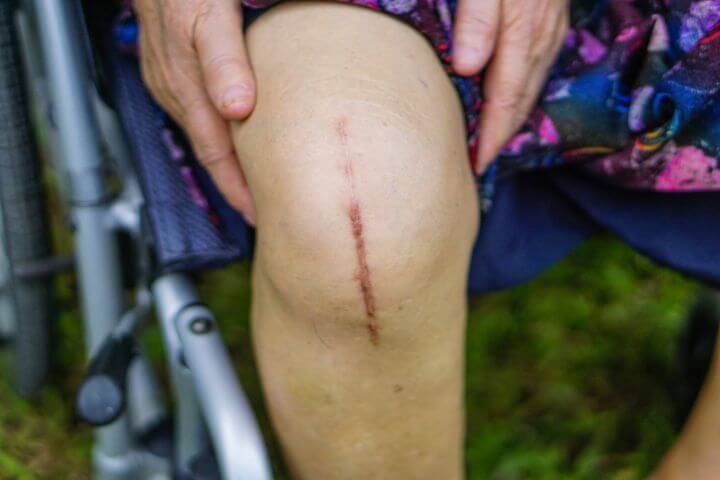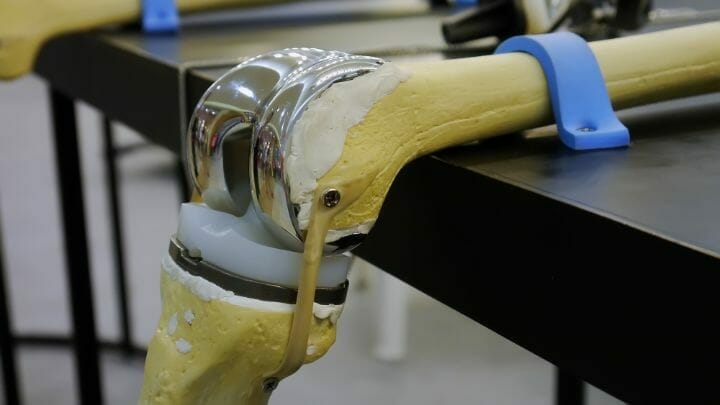Knee replacement or knee arthroplasty surgery is one of the most commonly performed and the most successful orthopedic surgery in current times.
It is estimated that by 2030, in the United States alone, there will be an increase of 673% in demand for total knee arthroplasties. In other words, there will be close to 3.48 million procedures. (Projections of primary and revision hip and knee arthroplasty in the United States from 2005 to 2030 https://pubmed.ncbi.nlm.nih.gov/17403800/. )
The history of this surgery goes back to more than 100 years. Though there is no specific date that marks the beginning, it was in the year 1860 that knee implants were introduced. Their designs have constantly been evolving since then.
This article highlights the most prominent technological advancements in knee replacement surgeries from 1860 until now. It also discusses the exciting scope of knee replacement surgeries in the future.
You may also like Best Chair For Knee Replacement Recovery
Historical Milestones
Knee replacement technology went through umpteen changes to evolve to the present times. The sole aim of these advancements has been to find the best implant designs to restore knee functions while also improving the quality of life for a patient.
The major milestones in order of their year are as follows.
- 1860
A German surgeon, Themistocles Gluck, performed the first-ever surgical knee replacement.
He used a primitive knee joint design made of ivory.
- 1951
A hinge joint made from acrylic, known as a Walldius joint, was introduced. It was less rigid than its predecessor’s joint and hence provided more range of movement.
However, its design concept led to a lot of stress at the implant-cement-bone interface and caused loosening of the implant.
- 1958
The Walldius joint was manufactured from Cobalt & Chrome but was not very successful. There was limited axial rotation in the joint (movement around its axis). Also, there were reports of breakage at the stem in many cases.
- The early 1960s
John Charnley’s metal-on-polyethylene cemented hip replacement inspired the modern knee replacement. In this design, the metal component of the femoral bone rested on a plastic spacer (known as polyethylene) which was further attached to the metal tibial bony component.
All these parts were held in place by a fast-drying adhesive cement.
The cemented implants were successful and had longevity and are still widely used.
- 1968
Frank Gunston, a Canadian surgeon in the same hospital as Charnley, was the first to design the first polycentric unhinged knee. This unhinged knee was the first design that closely resembled the natural movements of the human knee. He published his findings in 1971.
This design showed encouraging results with respect to the range of movement and pain relief in the knee joint (implant).
You might also like Best Sleeping Positions After Knee Replacement Surgery
- The early 1970s
There was continued use of metal-on-polythene design during this time.
Later, with improvement in design, the implants contacting surfaces were made for better distribution of stress on the knees. Hence with distributed pressure, there was lesser wear and tear of the polyethylene spacer.
During the early 1970s, knee implant designs started to evolve independently in the United States too.
- 1974
- During this time, implant designs started developing around the non-cemented fixation of the knee prosthesis.
In this method, instead of using cement for fixation, a natural methodology was used. The implant was fixed with the help of natural bone which was allowed to grow into the pores of the implant surface. It helped to hold and fix the implant components.
-
- Instrumentation (instruments used in surgery) was also constantly improving during this time.
- The late 1970s and early 1980s
There were continued improvements in design. The shapes, materials, and methods of fixing the implants were all improving.
More emphasis was being laid on non-cemented implants. Metal inserts were introduced in the tibial component to increase their fixation. The designs were continuously evolving to allow more flexion movements in the joint.
- The late 1980s up to now
- During this time, the sizing of the implants became more accurate.
- Instruments used in the surgery became better.
- This time saw the beginning of large-scale production of knee implants worldwide with global distributions.
The past has always laid groundwork for the future.
All the above-mentioned advancements of the past have made the future of knee replacement surgeries very exciting.
In the future, the endeavor is to make implant fixations even more precise and designs even more customized for individual patients.
You might also like Best Knee Pillows After Knee Replacement
The Future of Knee Replacement
Today, modern methods of knee replacement are giving immensely successful outcomes postoperatively. This field is constantly evolving and progressing by leaps and bounds. The future is automated in this field.
The times ahead promise the following advancements :
-
Robot-Assisted Knee Replacement Surgery
The past two decades have seen the use of robots in assisting knee replacement surgeries.
The aim is to achieve more accuracy and precision with the help of robots. Robots are being widely used in partial knee replacement surgeries but sparingly in total knee replacement.
Their potential long-term usage as a routine in these surgeries is still under study.
-
Computer-Assisted Navigation in Knee Surgery
It is also known as software-guided surgery. It improves precision in knee surgery by continuously tracking points in the anatomy of the knee and the implant. It then projects them onto a computer screen during surgery.
The software helps to calculate the position of the shin and thigh bones. It provides calculations for the precise placement of the knee implant. Hence it acts as a guide to take any corrective measures during the surgery itself.
The advantages of this process are a better-aligned knee with more functionality as compared to conventional methods.
Patient-Specific Instrumentation (Psi)
Another precision technology, PSI, is unlike software-guided surgery. Here all planning is done before the surgery. With all standardization being done beforehand, it leads to a shorter operating time.
-
Customized Implants
Another novel technique is placing patient-specific customized knee implants.
This technique will ensure a correctly fitting implant without over or under coverage by the implant. The idea is to select implants that closely resemble the patient’s natural knee and all its variations.
Summary
Over the last 100 years, there has been phenomenal improvement in knee implants and knee replacement techniques.
While on one hand, materials and techniques are evolving; on the other, pre-operative and post-operative care is also becoming better.
Initially, the aim was to find the best implants with good longevity and function. With that achieved, the focus shifted towards patient satisfaction, increased kinematics, and more precision in the surgery.
Looking back at the past makes us believe that we have even more exciting times ahead of us as we approach the future of knee replacement surgery.
For precaution and tips after replacement surgery, below are the list that may help you.
- Driving After Knee Replacement
- Yoga After Knee Replacement
- Hiking After Knee Replacement
- Skiing After Knee Replacement
- Bike Riding After Knee Replacement
- Can You Kneel Down After a Knee Replacement?
- How Long to Wear Compression Stockings After Knee Replacement Surgery?
- Can You Damage a Knee Replacement if You Fall on It?





